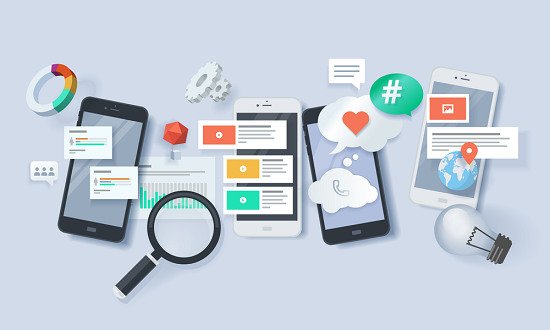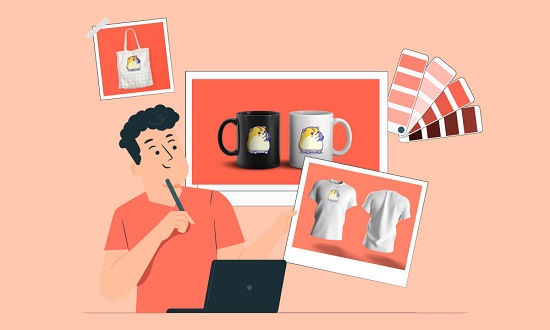How to Build a Product That Sells Online: A Comprehensive Guide
Case Studies
The global e-commerce market is booming, and for aspiring entrepreneurs, the opportunity to build a product that sells online has never been greater. However, with the vast number of products available, creating something that stands out and resonates with consumers requires a thoughtful and strategic approach. From product design to technical development and packaging, every detail matters in crafting a product that sells successfully online. In this guide, we’ll delve deep into product design, technical design, and packaging best practices and other important tips to ensure your product’s success in the competitive world of e-commerce.
1. Product Design: Creating Something Unique and Valuable
The foundation of any successful product is great design. It doesn’t matter if you’re selling digital goods or physical products—good design is what captures attention and differentiates you from competitors. Here’s how you can approach product design to maximize its market potential:
a) Understand Market Needs
Before diving into design, ensure there’s a demand for your product. This involves:
Start your Shopify 14-day trial with FireApps
Did you know Shopify is now accounting for 20% of the e-commerce business.
Over 2200 merchants open their Shopify store everyday and 50% of them have a repeat purchase. Join them today!

- Market Research: Use tools like Google Trends, social media, and keyword research to find gaps in the market or trending products.
- Customer Personas: Identify your target customers by considering demographics, needs, preferences, and buying habits.
- Competitive Analysis: Study what similar products are already doing well. Identify both their strengths and weaknesses to find opportunities for differentiation.
b) Functionality First, Aesthetics Second
While a product’s appearance is important, functionality is paramount. Consider:
- Solving a Problem: The product must provide a solution or improvement that your target audience values.
- Usability Testing: Engage with potential users early on to ensure the product design is intuitive and meets their needs.
- Ergonomics and Experience: Particularly for physical products, it’s crucial that your design considers comfort, ease of use, and satisfaction.
c) Aesthetic Design Matters
Once functionality is assured, focus on how the product looks:
- Brand Identity: Align your product design with your brand’s values and image. For example, Apple products are known for their sleek, minimalist design, which aligns with their identity of simplicity and sophistication.
- Consistency: Every element—from the product’s color scheme to the textures—should feel cohesive with your brand’s message and promise.
- Customization: Many online shoppers love the idea of having options. If feasible, offer customizable aspects such as colors, sizes, or features.
2. Technical Design: Building for Performance and Scalability
While the aesthetics of product design get a lot of attention, the technical design is equally important, especially when it comes to selling products online. Whether you’re developing software or creating a physical item, technical design impacts the user experience, product longevity, and scalability.
a) Digital Products: Functionality and User Experience (UX)
For digital products such as apps, eBooks, or software:
- Seamless Functionality: The product should function smoothly on all devices it’s intended for. Make sure it is cross-platform and mobile-friendly.
- User-Centric Design: Focus on creating an intuitive interface that doesn’t require a learning curve. If users can’t navigate your app, they won’t buy it or recommend it.
- Speed and Security: Optimize for performance and security, as these are crucial factors that influence user trust and retention.
b) Physical Products: Manufacturing and Engineering
When creating physical products:
- Material Selection: Choose materials that balance cost, durability, and aesthetic appeal. Make sure your material choice enhances the product’s usability and longevity.
- Prototype and Test: Don’t skip the prototyping phase. Whether you’re 3D printing prototypes or handcrafting, test them thoroughly to identify potential weaknesses or areas for improvement.
- Scalability: Think about how easy or difficult it will be to scale production. Start small, but make sure your technical design allows for growth in demand.
c) Integration with Platforms
For both physical and digital products, make sure that your product integrates easily with the platforms you’re selling on. For instance:
- Shopify: If you’re using Shopify, ensure your product listings are easily integrated and your inventory syncs correctly.
- Amazon and eBay: For physical goods, make sure your product can comply with their packaging and shipping requirements.
- Product Feeds and APIs: For digital goods, ensure smooth delivery and integration with e-commerce platforms through APIs or automated product feeds.
3. Packaging Design: Your First Impression
Packaging plays an essential role in building a product that sells online. It’s the first physical interaction your customer will have with your brand, so the design and functionality of the packaging can impact both their purchasing decision and their overall experience.
a) Brand Consistency
Packaging is an extension of your brand. It should reflect your brand’s identity and values:
- Color and Typography: Choose colors, fonts, and styles that are in line with your branding. This consistency builds recognition and trust.
- Logo Placement: Make sure your logo is prominently and tastefully placed on your packaging. Over-branding can be off-putting, but discreet, elegant placements can strengthen brand recall.
b) Sustainability
Many consumers today prioritize eco-friendly products, and your packaging can be a great opportunity to appeal to this growing demographic:
- Biodegradable and Recycled Materials: If possible, use packaging made from recycled or biodegradable materials. Not only does this resonate with environmentally conscious consumers, but it can also be a point of differentiation in your marketing.
- Minimalism: Excess packaging is wasteful and can frustrate consumers. Focus on minimalist designs that use just the right amount of material while maintaining functionality.
c) Practicality and Protection
While aesthetics are important, never compromise on protection. Ensure the packaging adequately protects the product during shipping:
- Durability: The packaging should withstand shipping without damaging the product. This is especially important for fragile or high-value items.
- Ease of Opening: Packaging should be user-friendly and easy to open without compromising the product’s safety.
4. Optimizing for E-Commerce Platforms: Where to Launch and How to Present Your Product
Choosing the right platform is critical when launching your product online. Each platform comes with its own advantages and challenges.
a) Shopify: The Versatile Platform
Shopify is one of the most popular e-commerce platforms, offering ease of use, flexibility, and a range of features. Here’s how you can make the most of Shopify:
- Customizable Themes: Shopify offers various themes, both free and paid, that you can customize to fit your brand’s identity.
- App Integration: Shopify has an extensive app store that allows you to add features such as product reviews, live chat, email marketing, and more.
- SEO Optimization: Optimize your Shopify store for SEO by using relevant keywords, writing compelling product descriptions, and optimizing images.
b) Amazon: The Giant Marketplace
If you want to reach a vast audience, Amazon is a great option:
- Fulfillment by Amazon (FBA): Use FBA to store your products in Amazon’s warehouses, and they’ll handle shipping, returns, and customer service.
- Product Listings: Optimize your product listings with clear titles, bullet points, detailed descriptions, and high-quality images.
- Reviews and Ratings: Encourage customer reviews, as they heavily influence buying decisions on Amazon.
c) Other Platforms
Other platforms like Etsy, eBay, and WooCommerce are also excellent options depending on the product type and your target audience:
- Etsy: Best for handmade, vintage, and artistic goods. Ensure your product has a strong, niche appeal.
- WooCommerce: Ideal for businesses already using WordPress. It offers flexibility and customization but requires more technical know-how.
5. Optimizing Product Descriptions and Visuals for Online Sales
Once you’ve chosen a platform, the way you present your product can make or break the sale. Here’s how to optimize your product descriptions and visuals:
a) Product Descriptions
A well-written product description is essential for converting visitors into buyers. Key tips include:
- Clarity and Detail: Be clear and concise but include all relevant details. Size, weight, material, features, and care instructions are all important, especially for physical goods.
- SEO-Friendly Content: Use relevant keywords naturally in your product titles and descriptions to increase visibility in search engine results.
- Highlight Benefits, Not Just Features: Features describe what the product is, while benefits explain why the customer needs it. Focus on the customer’s pain points and how your product solves them.
b) Product Photography and Visuals
High-quality images are crucial when selling online since customers can’t physically interact with the product:
- Multiple Angles: Show the product from different angles, including close-ups of important features or textures.
- Lifestyle Photos: Show your product in use or in a lifestyle setting to help customers visualize how it fits into their lives.
- Videos: Adding a product video can dramatically increase conversions. A short, engaging demo showing the product’s functionality is often enough to convince potential buyers.
6. Additional Tips for Online Product Success
a) Leverage Social Proof
User-generated content, testimonials, and reviews can all add credibility and trust to your product:
- Encourage Reviews: After purchase, ask customers to leave reviews. This not only improves trust but also helps with SEO.
- Share Testimonials: Feature positive customer testimonials prominently on your product page or website.
b) Offer Multiple Payment Options
Customers are more likely to complete their purchase if they have multiple payment options:
- Credit/Debit Cards: The standard option, but consider adding more alternatives.
- PayPal, Apple Pay, and Google Pay: Offering these options can make the checkout process more convenient and improve conversion rates.
c) Utilize Retargeting and Email Marketing
Use retargeting ads and email marketing to remind visitors who didn’t make a purchase to return and complete their order.
Conclusion
Building a product that sells online is about more than just creating something people want; it’s about the entire process—from design and packaging to technical implementation and platform optimization.
By focusing on creating a product that is functional, aesthetically pleasing, and well-packaged, and by leveraging the power of e-commerce platforms like Shopify and Amazon, you can build a product that not only stands out but also resonates with your target market. Optimize your product presentation through compelling descriptions, stunning visuals, and a user-friendly shopping experience, and you’re well on your way to e-commerce success.


Leave a Reply